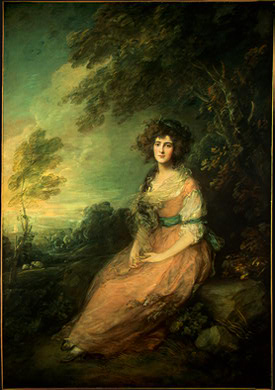By Ally Crossland
The original ‘It Girls’ have found a new stage in the National Portrait Gallery’s latest exhibition. ‘The First Actresses’ celebrates women finding fame on the stages of the West End, and in the beds of the aristocracy. The Cheryl Cole’s and Sienna Millers of their day, these women were proud and defiant of the social codes which contained most of their female contemporaries. Icons such as Sarah Siddons and Mary Robinson became manipulators of their own brand, and portraiture became their public calling card. Many even forged their own careers in writing novels and plays. In the newly forming consumer market, their potent blend of fast living and loose morals was irresistible. Many of these women came from the world of prostitution and continued to use it as leverage in their personal and professional lives. It certainly is empowering stuff for the average twenty first century girl, when freedom for women to perform on the public stage has always been a given.
 |
| Sir Joshua Reynolds' Nell Gwynn |
This exhibition is the first that solely celebrates women and their public role in this period. In our post feminism culture, surely this must be a positive step forward? However, if we begin to look beyond the seductive gazes and expensive costumes in these portraits, we can uncover a far more complicated dialogue that existed in this world. Who were the people watching these women perform? Who took these courtesans as mistresses and commissioned portraits of them to hang in the Royal Academy’s Summer Exhibition? Who married these professional women, often forcing them off the stage and back into the private sphere of the home where they were they could be made ‘polite’ again? Could the answer be as simple as, men?
 |
| Gainsborough 'Mrs. Richard Brinsley Sheridan' |
Now I am not the raging burn-your-bra kind of feminist, but there are social issues of this period that have been glossed over by these glamorous portraits. The more sinister side of this colourful, yet fiercely patriarchal world has been discounted. The exhibition undoubtedly celebrates the beauty of women, yet fails to recognise that their beauty was the façade of a world where all forms of performance was constructed and controlled by men. These portraits are the final flourish of mans’ social authority over their female counterparts in the eighteenth century public scene.
'The First Actresses: from Nell Gwynn to Sarah Siddons' is open at the National Portrait Gallery until the 8th January 2012. Tickets £11, £9 concession.



